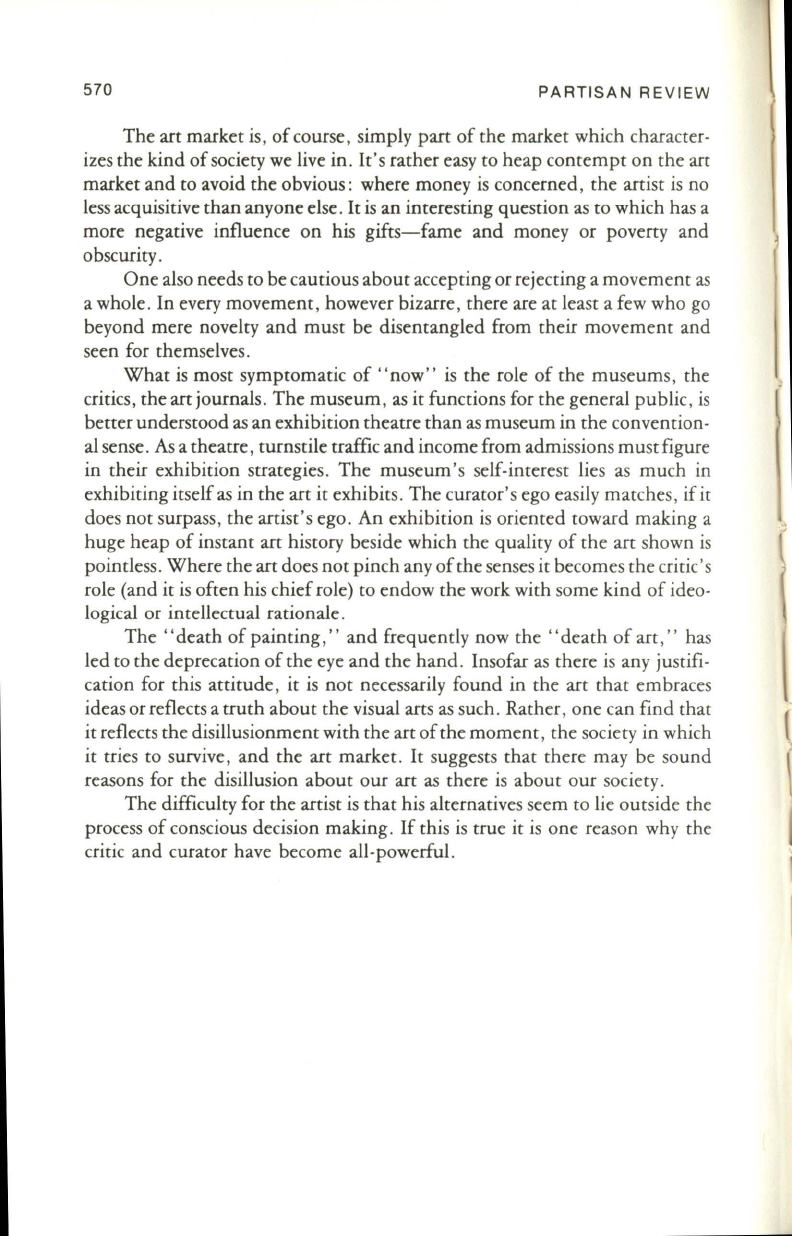
570
PARTISAN REVIEW
The art market is, of course, simply part of the market which character–
izes the kind of society we live in. It's rather easy to heap contempt on the art
market and to avoid the obvious: where money is concerned, the artist is no
less acquisitive than anyone else.
It
is an interesting question as to which has a
more negative influence on his gifts-fame and money or poverty and
obscurity .
One also needs to be cautious about accepting or rejecting a movement as
a whole. In every movement, however bizarre, there are at least a few who go
beyond mere novelty and must be disentangled from their movement and
seen for themselves.
What is most symptomatic of "now" is the role of the museums , the
critics, the
art
journals. The museum, as it functions for the general public , is
better understood as an exhibition theatre than as museum in the convention–
al sense . As a theatre, turnstile traffic and income from admissions must figure
in their exhibition strategies. The museum's self-interest lies as much in
exhibiting itself as in the art it exhibits . The curator's ego easily matches , if it
does not surpass, the artist's ego. An exhibition is oriented toward making a
huge heap of instant art history beside which the quality of the art shown is
pointless. Where the art does not pinch any of the senses it becomes the critic's
role (and it is often his chief role) to endow the work with some kind of ideo–
logical or intellectual rationale .
The "death of painting ," and frequently now the " death of art," has
led to the deprecation of the eye and the hand . Insofar as there is any justifi–
cation for this attitude , it is not necessarily found in the art that embraces
ideas or reflects a truth about the visual arts as such. Rather , one can find that
it reflects the disillusionment with the art of the moment , the society in which
it tries
to
survive, and the art market. It suggests that there may be sound
reasons for the disillusion about our art as there is about our society.
The difficulty for the artist is that his alternatives seem
to
lie outside the
process of conscious decision making . If this is true it is one reason why the
critic and curator have become all-powerful.


